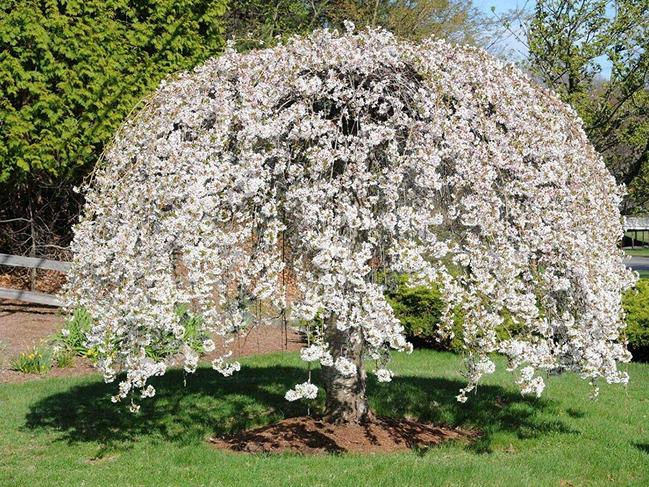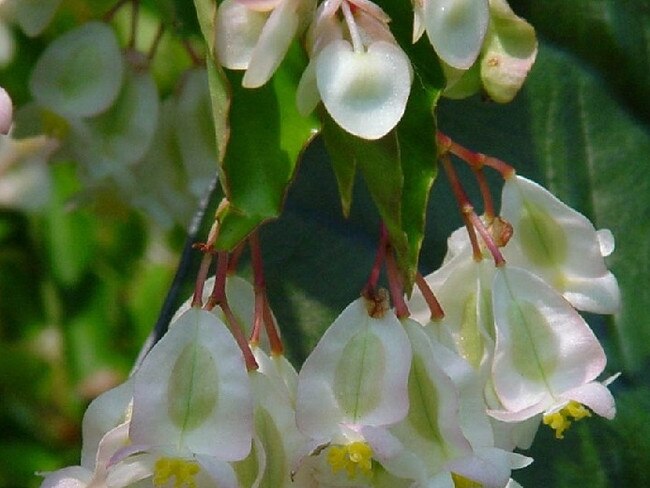Your gardening questions answered: Sophie Thomson reveals how to make the most of your garden
Very rewarding and easy to grow, these plants should tick all the boxes for your garden.
Property
Don't miss out on the headlines from Property. Followed categories will be added to My News.
Our gardening expert Sophie Thomson is here to answer all your questions to help your yard survive and thrive.
***
Q. I have a weeping cherry tree that is 30 years old. In recent times it has been sending out suckers in the garden. I wish to remove them and are wondering what is the best way to do this is? I am concerned that if I use poison to do this it will also kill the tree.
A. Many plants like your weeping cherry or roses are grafted with the chosen plant on top of a rootstock. These suckers are simply growths that originate from the rootstock of your grafted weeping cherry. They can be triggered by plant stress, such as a lack of water or causing an injury to the rootstock by digging around and cutting a root.
You cannot poison these suckers as the poison will flow through to your tree and cause problems. The only way to successfully remove suckers is to rip them off at the point where they originate. Simply cutting the suckers off does not work and in fact, it can cause the suckers to bush up.

Removing suckers is best done when the soil is moist and you can scrape it back from the sucker. Using thick leathery gloves, and some brute strength, then rip the sucker off. Hopefully it will come off with a ‘heel’ (a piece of the older wood) and the point at which the sucker is removed from the rootstock will scar and ‘heal’, and there will be no more suckers. If you can deal with suckers early, you can often get on top of the problem. However, if you are trying to eliminate suckers that are several years old and have had a chance to establish, it is a difficult task and may not succeed. In this case, cut them off regularly.
Q. I have an old climbing Lorraine Lee rose. It has never been pruned and rambles through the nearby trees and shrubs. Should I prune it back heavily and if so how?
A. Lorraine Lee is a wonderful rose as it flowers in winter in a mild climate and early spring in a cooler climate, either way before any other roses. It is also fairly disease resistant. However, as it is winter flowering you must not prune it in winter or you will cut off wood which would otherwise bloom for you. Rose experts suggest that you prune it in autumn, around Anzac Day, so now is the ideal time to do so. Remove any of the old dead wood and only give it a trim, but not a hard prune, unless you are trying to reduce its size quite significantly.

SOPHIE THOMSON’S PLANT OF THE WEEK -BEGONIAS
This family of plants is so diverse, ranging from bedding plants and tender glasshouse plants, to incredibly robust plants suitable for container growing inside and out.
Begonias are grown for their colourful flowers and ornamental leaves.
In the right position indoors, on a veranda or in a shade house, some varieties will survive for years. Most varieties are frost tender, however they will survive in cold climates as long as they are given protection under the roofline or inside.
The most widely known begonias are called Bedding Begonias.

Usually sold in punnets, they are grown for their attractive foliage and flowers. They grow as neat mounds to 20cm high, with green to burgundy foliage and white, pink or red flowers. They are happy in sun or semi-shade, in the ground or pots.
And although sold as an annual, they’re often perennial in the right conditions. The cane-stemmed begonias are probably my favourite. These evergreen varieties can produce sturdy canes, ranging from 60cm up to two metres high, depending on the variety.
Sometimes referred to as ‘Angel’ or ‘Dragon Wing’ begonias due to their leaf shape, these varieties produce pendulous sprays of flowers in assorted colours of white, pink and red.

Other begonias have very attractive ornamental foliage and relatively insignificant blooms. They are all worth growing and most are very rewarding and easy to grow.



